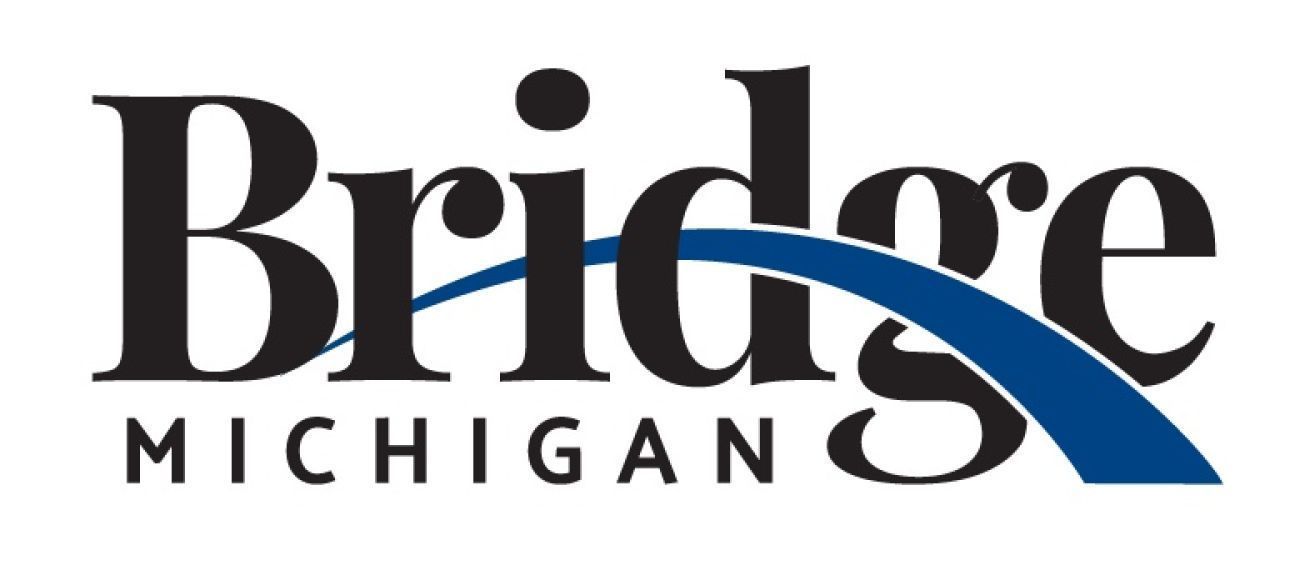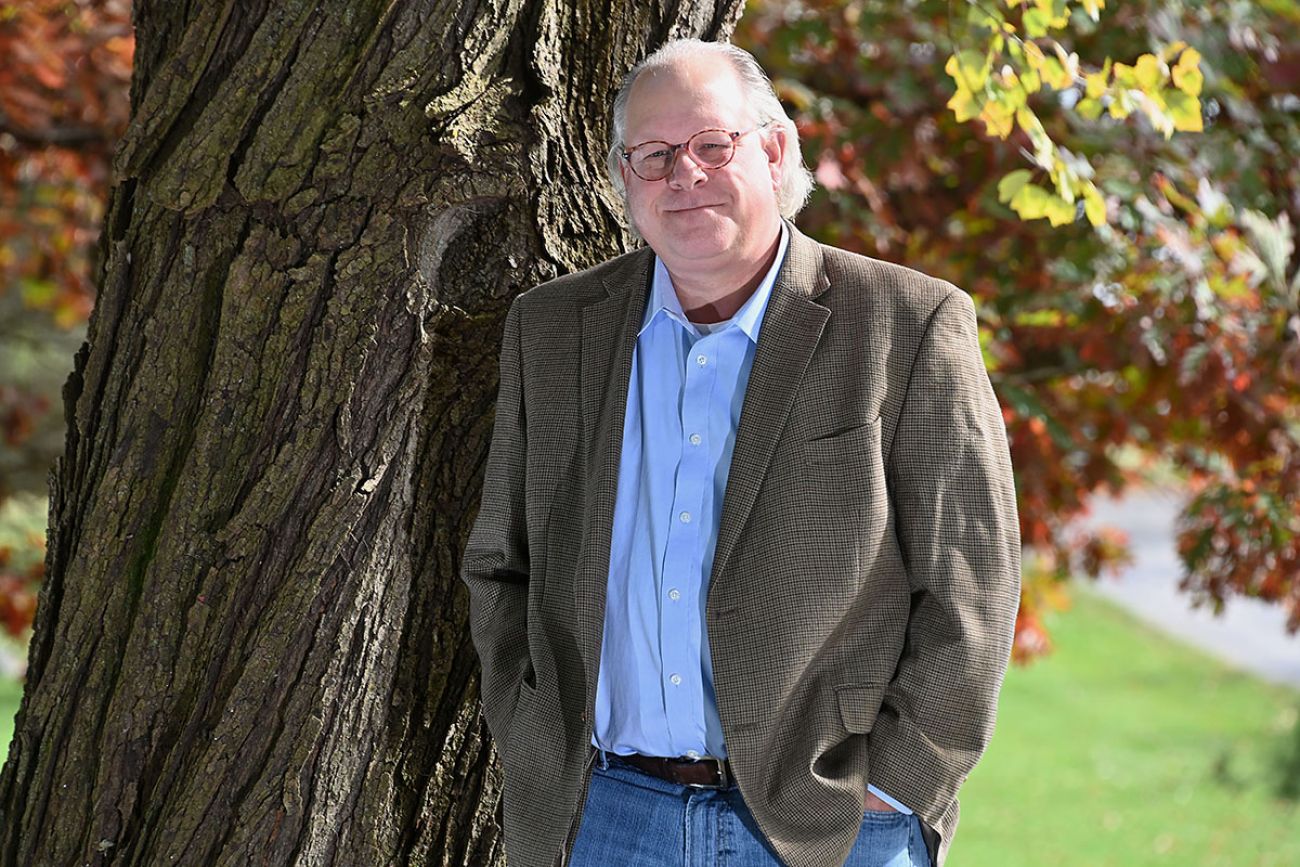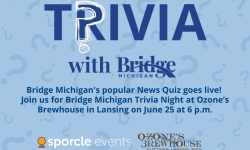How Bridge Michigan grew from a playground idea to national reputation

Editor’s note: Bridge Michigan publisher and founding chief executive officer, John Bebow, is retiring at year’s end. He will serve as an adviser to Bridge and the Center for Michigan for two years. This is his account of how Bridge’s rapid growth.
Bridge started with a phone call on a crisp autumn evening in 2009. I was swinging my then-5-year-old daughter at the local playground when Roger Martin, co-founder of Martin Waymire Advocacy Communications, lit up my phone.
At that point, the Center for Michigan was three and a half years old. Our work to that point consisted of two projects. We were nearing completion of a massive public engagement campaign involving hundreds of community meetings and 10,000 Michigan residents to set a citizens’ agenda for the 2010 statewide election. And CFM Founder Phil Power and I published a weekly email newsletter on politics and policy distributed to pretty much everyone we knew in Michigan civics — about 500 people.
As my daughter giggled on the playground, Roger presented a brainwave… Michigan needed a “Truth Squad” to watchdog political advertising in 2010. It was the early days of social media. Political campaigns had grown increasingly nasty and unmoored from truth and kitchen table issues. The Center for Michigan should build such a Truth Squad, Roger argued, because it would reinforce the Center’s public agenda from meeting with 10,000 statewide residents. And he thought it would bolster readership of our email newsletter.
So, we did it. Throughout 2010, with the help of retired and freelance reporters, the Center for Michigan published dozens of analyses of television ads, campaign flyers and political speeches, spotlighting misdeeds across the political spectrum. Television stations featured Michigan Truth Squad reporting, Michigan Public Radio aired a weekly Truth Squad segment, and the Center leveraged the momentum to co-host with Detroit Public Television that year’s major gubernatorial debate.
Related:
- John Bebow retires after building Bridge into national model for nonprofit news
- Bridge Michigan expands again, hires editor of innovation, daily news
- Bridge Michigan top editor David Zeman retiring after award-winning career
When the dust cleared after Election Day, both major gubernatorial candidates had cited our Michigan’s Defining Moment public agenda in their policy platforms. And Truth Squad emerged as Michigan’s upstart media source. The Center for Michigan suddenly had a much bigger statewide profile. Roger Martin, his partner David Waymire, and I sat down again to build on the momentum. An evening of cold beers sparked another brainwave. The next aspiration was to transform Truth Squad into a weekly online news magazine to supplement the dwindling in-depth reporting in traditional newspapers.
Our founder Phil Power was at first skeptical. He’d sold his newspaper company five years earlier. His original definition of the Center as a “think and do tank” wasn’t centered on journalism. He did recognize the decline of in-depth reporting, but what really stirred him to the idea of a new news publication was an opportunity for constant statewide reach and engagement. So, always a thoughtful entrepreneur and risk-taker, Phil green-lighted the notion.
We built a five-year (2011-2015) business plan — “Engage. Inform. Achieve.” — to continue annual public engagement campaigns, publish original in-depth, future-oriented reporting, and take our findings into the halls of power to spur positive change. Phil and his wife Kathy committed $1 million dollars a year to the enterprise and challenged me to match it with foundation grants. We took the plan on the road to every major philanthropy who would talk to us. We earned generous seed funding from more than a dozen major and mid-sized foundations.

We launched as “Bridge Magazine” right after Labor Day 2011 with a staff of two — editor Derek Melot (a Lansing State Journal veteran) and Ron French, one of the most celebrated reporters in Michigan who I’d known since we were thrown together at the Detroit News in 1995 to cover a big mob indictment. We paused on the name for too long and kind of whiffed when we settled on it. It was meant to sort of pay homage to our state’s famous Mighty Mac symbol with an amorphous allusion to bipartisan problem-solving. Ever since, we’ve fielded inquiries about whether we’re a publication about the bridge card game or somehow related to Michigan’s “Bridge card” public food assistance program. As we got rolling, we scrambled to publish an in-depth report or two every week on a wide range of topics including education, the economy, and the environment. In retrospect, it’s amazing what such a small team could achieve, including a major breakthrough less than two years into the enterprise. “Michigan’s 30,000 Forgotten Four Year Olds” documented how Michigan had long underserved preschoolers despite clear data that preschool was among the best strategies to boost lagging learning. The Center for Michigan formed a coalition of business leaders and convinced then-Governor Rick Snyder to double the state’s preschool budget. The end result is now more than a billion dollars in additional preschool investment and probably well more than 100,000 children served.
By 2015, it was time to go back to philanthropy for another round of funding — with the preschool project as major proof of concept. By then it was clear that our idea for a nonprofit nonpartisan newsroom was far from original. All kinds of concerned leaders and traditional newsroom refugees came to the notion at the same time. Publications like the Texas Tribune, California Matters, Minnesota Post, and Vermont Digger were doing the same thing we were — only they were arguably doing it better and growing faster. Around that time, I developed one of our more effective pitches to foundation program officers… You can pay the shiny MBAs at McKinsey a million dollars for a glossy moment-in-time report about the policy issues that concern you. Or, for a fraction of that, you can invest in Bridge to produce constantly updated on the ground reporting to inform your philanthropic mission. It worked. Foundations renewed funding across the board while more, like the Knight Foundation, invested for the first time. Our team of journalists steadily expanded.
Yet by early 2017, I saw trouble on the horizon. A snotty Detroit Free Press editor was in my head. “Your team is doing great work at Bridge,” the Freepster sniffed at an event in Detroit. “Too bad nobody’s reading it.” What ticked me off was the accuracy of his dismissal. We’d grown to more than 20,000 email subscribers, but we were only attracting about 100,000 readers per month. We could only count on philanthropy for so long. We needed more readers to attract more donors — paying readers who could steadily underwrite a much higher percentage of our annual expenses. We had to change. It wasn’t easy. Our team had grown comfortable in a quasi-academic twice-a-week publishing schedule. They were scared of a traditional “Hunger Games” newsroom culture where eyeballs were all that mattered. Fear intensified for a while when I brought in Bill Emkow, one of Michigan’s leading experts in online news audience generation, to first consult and then become our full-time director of growth strategy. We caught a big break as soon as Bill got here. Facebook called. They invited us to join a national training program on growing audience and paid readership. It was like a mini-MBA program for Bill, me, and Amber DeLind, our longtime public engagement director who we put in charge of growing Bridge “membership.” Implementing professional individual fundraising systems and tactics for the first time, Amber grew reader donations from $123,000 in 2017 to more than $200,000 in 2018 and $300,000 in 2019.
Then COVID hit in early 2020. The pandemic initially terrified us like everyone else until — only a few days into the crisis — we saw massive opportunity. Only a year earlier, again with the help and thought partnership of our old friends Roger Martin and David Waymire, we conceived, fundraised for, and launched two new Bridge beats — HealthWatch (with expert reporter Robin Erb) and BusinessWatch (with longtime MLive business reporter Paula Gardner). And we already had Mike Wilkinson, one of the state’s premier data reporters on the team. It looked prescient, but it was just extraordinary good luck sprinkled with a bit of good planning. We were poised to present Michigan’s best statewide coverage of the pandemic, including daily updates on statewide, county-by-county caseloads and hospitalization rates. Reporters broke all kinds of stories on the pandemic’s impact on education, the statewide economy, and so many health issues. Readership exploded to more than a million per month. Donations quickly followed and skyrocketed to more than $750,000 for the full year.
As David Zeman and I are now in our final weeks before retirement, we can look back on a whirlwind decade-plus of long days of newsgathering, constant fundraising and staff building, and more challenges and opportunities than we can recount. During our tenure, Bridge Michigan has earned more than 200 state and national journalism awards, including five Michigan Press Association Newspaper of the Year honors, three straight Michigan Journalist of the Year awards, and a wide range of recognition for public service, environmental, education, and government transparency reporting — and collaborations with news organizations across Michigan and the Midwest. Bridge Michigan’s journalism and business model innovations have been profiled by Columbia Journalism Review, the American Press Institute, the Google News Initiative, the Facebook Journalism Project, the Institute for Nonprofit News, and the American Journalism Project. Over the past 17 years, the Center for Michigan and Bridge Michigan have earned some $45 million in total support from philanthropy, reader donations, and other revenue sources. Support from readers, sponsorship and other earned revenue initiatives will top $1.5 million this year — more than a third of total revenue.
Most importantly, as David and I prepare to exit, we can expect to be soon forgotten in a vibrant new wave of growth and innovation led by our successors— CEO Katy Locker, executive editors Joel Kurth and Lisa Yanick Litwiller, Amber DeLind, Bill Emkow and a total staff of more than 20 dedicated full-time journalists and professionals.
The aspiration is for this chronicle of Bridge’s early history to grow yellow and dusty, tucked away on some shelf in one of our offices, as the publication just keeps going and growing, always innovating, always informing, and serving its true owners — the people of Michigan.
See what new members are saying about why they donated to Bridge Michigan:
- “In order for this information to be accurate and unbiased it must be underwritten by its readers, not by special interests.” - Larry S.
- “Not many other media sources report on the topics Bridge does.” - Susan B.
- “Your journalism is outstanding and rare these days.” - Mark S.
If you want to ensure the future of nonpartisan, nonprofit Michigan journalism, please become a member today. You, too, will be asked why you donated and maybe we'll feature your quote next time!




